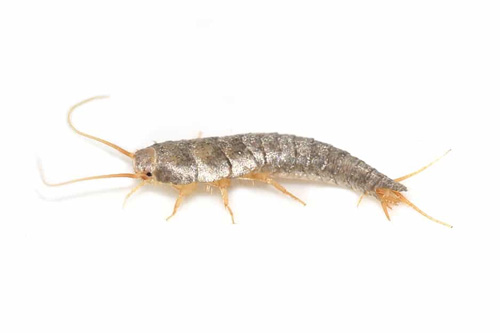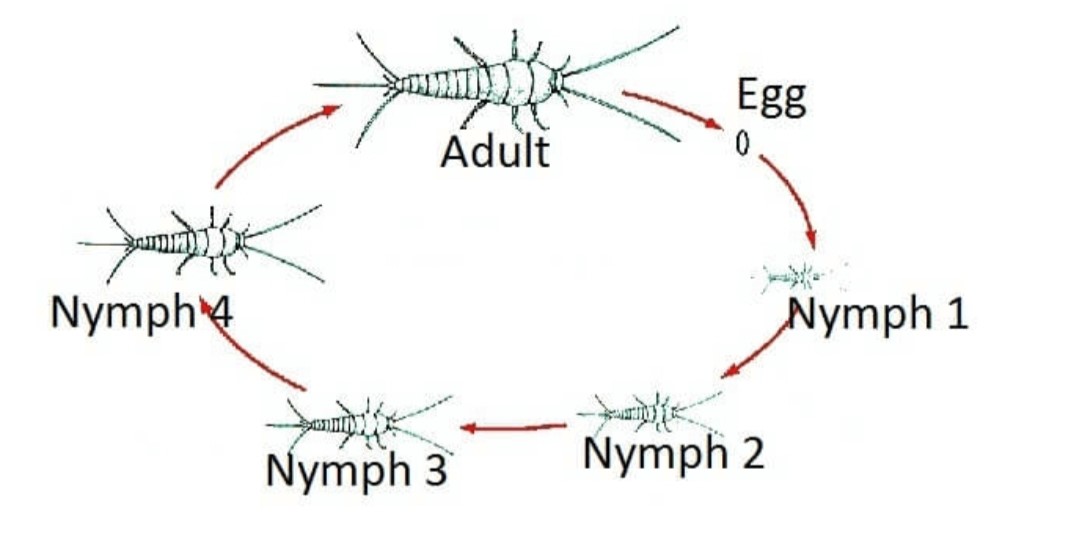

Silverfish (Lepisma saccharina)

What Are Silverfish? What Do They Look Like?
Silverfish are small, wingless insects that are known for their silvery-grey colour and their unique, fish-like shape. They are typically between 1/2 and 1 inch in length, and have long antennae and three long bristles at the tail end of their bodies.
Their bodies are covered in shiny, silvery scales that give them their distinctive appearance. They are often found in dark, damp environments, such as basements, attics, and bathrooms, where they feed on starchy materials like paper, glue, and clothing.
Despite their name, silverfish are not actually fish at all. They are classified as insects and belong to the order Zygentoma. Implementing comprehensive Silverfish Pest Control measures is crucial to prevent infestations and protect your property from damage.
How To Spot The Signs Of A Silverfish Infestation?
There are several signs that can indicate a silverfish infestation in your home:
- Seeing silverfish: If you spot a silverfish crawling across a surface, it is a clear indication that they are present in your home.
- Shed skins: Silverfish shed their skin as they grow, so finding these small, translucent skins around your home is a common sign of an infestation.
- Yellow stains: Silverfish leave behind yellow stains on surfaces where they have been active, such as walls, books, and clothing.
- Holes in fabrics: Silverfish are known to feed on fabrics, so if you notice small holes in clothing, curtains, or upholstery, it could be a sign of an infestation.
- Damage to books and paper: Silverfish are attracted to paper and can cause damage to books, magazines, and other paper materials.
- Musty odor: Silverfish emit a musky odor that can be noticeable in areas where they are present.
If you notice any of these signs, it is best to contact a pest control professional to help identify the extent of the infestation and develop a plan to eliminate the silverfish from your home.
Are Silverfish Harmful?
Silverfish are generally not harmful to humans or pets, as they do not bite or sting. However, they can cause damage to property, such as books, papers, and fabrics, as they feed on starchy materials like cellulose, glue, and cloth fibers. In large numbers, silverfish can cause significant damage to these items, which can be costly to repair or replace.
Additionally, silverfish can be a nuisance and can cause anxiety for some people, especially if they have a fear of insects. In rare cases, they have been known to trigger asthma or allergies in individuals who are sensitive to their shed skins or faeces.
Overall, while silverfish are not directly harmful to humans, they can cause damage to property and be a source of stress and anxiety for some individuals. If you have a silverfish infestation, it’s best to contact a silverfish pest control professional to help eliminate the problem and prevent future infestations.
How Do I Get Rid Of Silverfish?
- Reduce moisture: Silverfish thrive in humid environments, so reducing moisture levels in your home can help deter them. Use dehumidifiers, fix any leaky pipes or faucets, and ensure proper ventilation in bathrooms and other damp areas.
- Seal entry points: Silverfish can enter your home through small cracks and gaps in walls and floors. Seal these entry points to prevent them from entering your home.
- Remove food sources: Silverfish feed on starchy materials like paper, glue, and clothing. Store these items in airtight containers or plastic bags to prevent them from becoming food sources.
- Use natural repellents: Essential oils like lavender, cedar, and citrus are natural repellents that can help deter silverfish. Place cotton balls soaked in these oils in areas where silverfish are likely to be found.
- Insecticides: There are several insecticides available that are specifically designed to kill silverfish. These can be used as a last resort if other methods are not effective. Be sure to follow the instructions carefully and use caution around children and pets.
- Consult a professional: If you have a severe infestation or are unable to eliminate silverfish on your own, it’s best to contact a pest control professional who can identify the source of the infestation and provide effective treatment options.
How Do I Prevent Silverfish?
- Reduce humidity: Silverfish thrive in moist environments, so reducing humidity levels in your home can help prevent them from establishing a presence. Use a dehumidifier, fix any leaks or water damage, and increase ventilation in damp areas like basements, crawl spaces, and bathrooms.
- Store food sources properly: Silverfish are attracted to starchy materials like paper, cardboard, and clothing. Store these items in airtight containers or plastic bags to prevent them from becoming food sources for silverfish.
- Seal entry points: Seal any cracks, gaps, and other entry points in walls, floors, and foundations to prevent silverfish from entering your home.
- Use natural repellents: Essential oils like lavender, cedar, and citrus can act as natural repellents for silverfish. Place cotton balls soaked in these oils in areas where silverfish are likely to be found.
- Clean regularly: Regular cleaning can help prevent silverfish infestations by removing food sources and reducing moisture levels. Vacuum carpets and floors regularly, and dust shelves and cabinets to eliminate silverfish eggs and larvae.
- Professional treatment: If you have a severe infestation or are unable to prevent silverfish on your own, contact a silverfish pest control professional who can identify the source of the infestation and provide effective treatment options.
Silverfish is a common pest that frequently appears, in kitchen bathrooms and normally comes out a night to feed on crumbs and loose scraps of food. Silverfish are capable of digesting cellulose from packaging and so can derive nutriment from paper. Silverfish probably date back over 300 million years ago. This insect can now be found anywhere from the home to the working environment, over the last couple of years office and apartment blocks have shown heavy widespread infestations. Central Pest Control has always recommended a risk assessment survey be carried out to locate the source of the infestation and to apply for safe residual insecticide work in compliance with health and safety and MSDS guidelines. In some cases, damage may arise in the lifting of tiles in bathrooms and kitchens.
The life cycle: About a hundred eggs are laid by each female, sometimes singly or in batches about three or four in cracks and crevices around skirtings door frames, and under objects. The eggs are oval about 1 mm in size and white.
Nymph stages: During the first three months the insect is whitish in colour, then silver, spade-shaped scales that make their appearance at the third molt. The external genital appendages appear at the eighth molt, but it is not known at that stage the insect becomes a fully mature silverfish and goes on molting throughout its life and in doing so is able to regenerate organs such as legs.
hbspt.forms.create({
region: “eu1”,
portalId: “139549486”,
formId: “3877713f-a04e-4183-bb55-6aaf236a3c0f”
});



